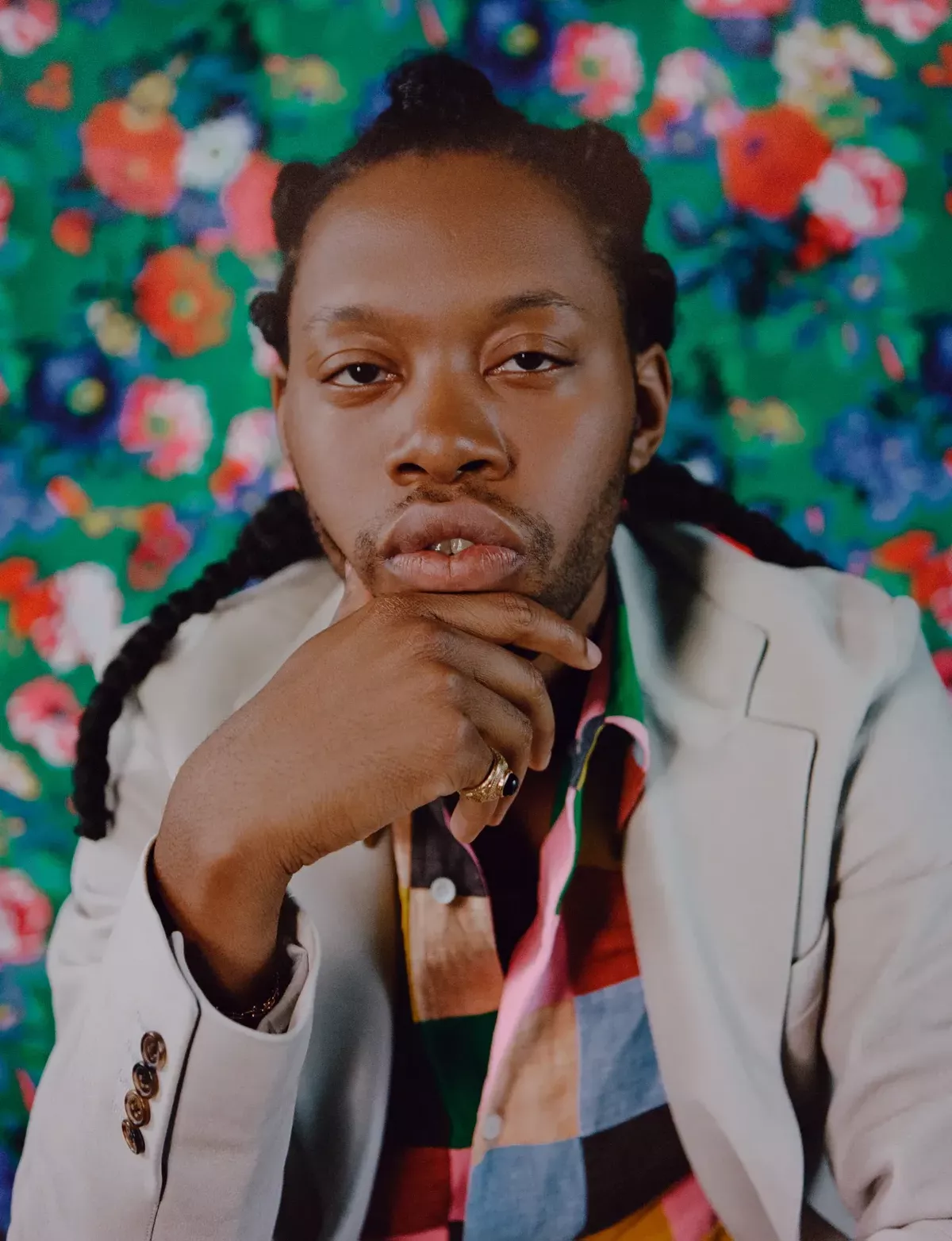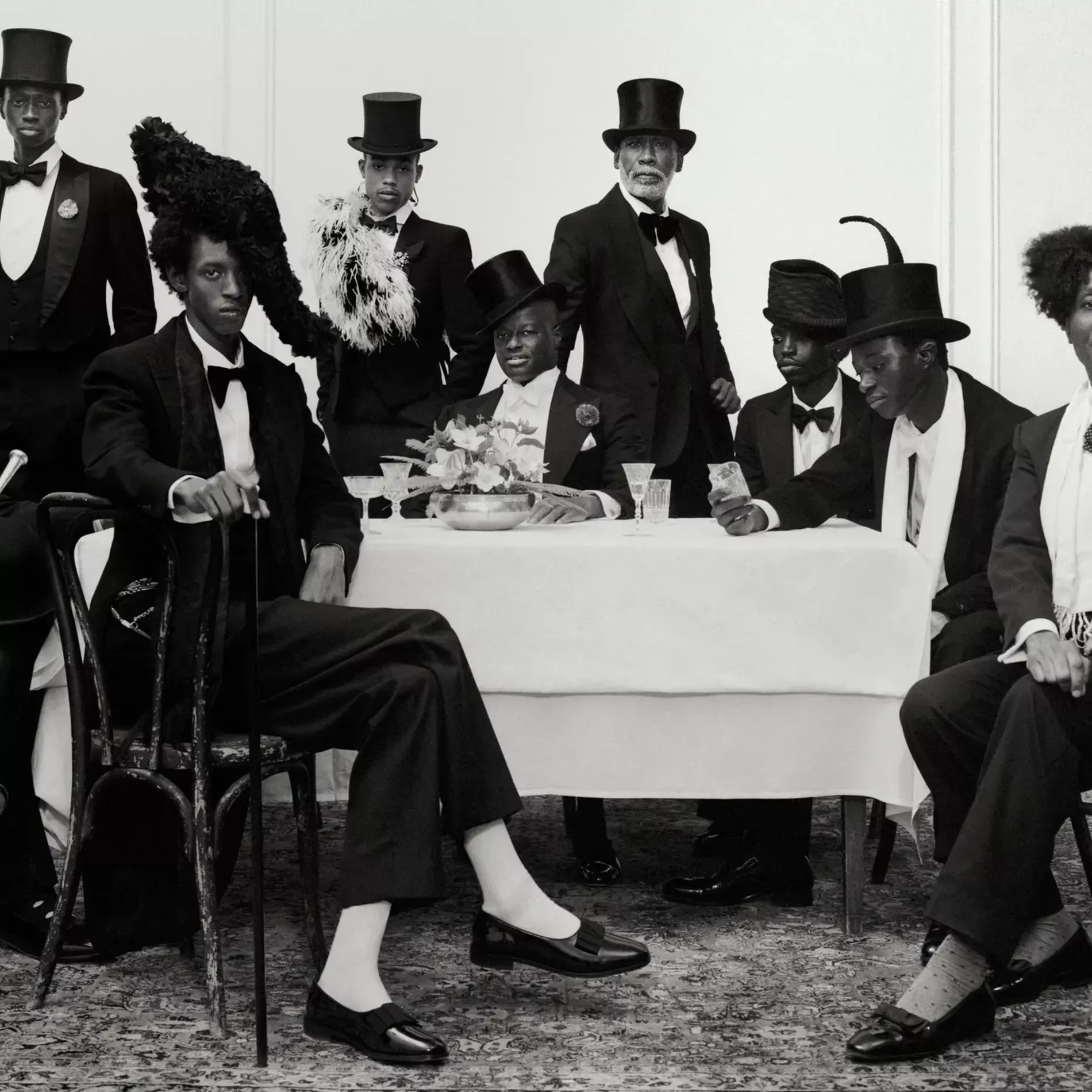As the Met Gala approaches, Jeremy O. Harris reflects on this years year's theme, 'Superfine: Tailoring Black Style', with a personal essay exploring the concept of the modern dandy
“You’re looking sharp, little man!” said the photographer as I sat down. I remember smiling bright and wide and holding on to my mother. “My mama picked it out!” I said of the suit and bow tie. The air in the room shifted. Everyone in the JCPenney photo studio looked at my mother, who was 21 and beaming, even though she was taking this family portrait alone. The nervous, pitying glances faded away. Looking “sharp” was a way to communicate to people that I was taken care of.
When I was asked to consider how I came to be a dandy – the type of man who flaunts his elevated wares much to the awe and fright of many around him – I called my mother, the person who has known me the longest. We looked over family photos and began the arduous task of dissecting every outfit I’ve ever worn. The first thing we noticed was a shift as I moved from a baby to the terrible twos. I went from being a smiling chubby infant to a smiling toddler in suits and ties. I asked my mother, Why – in a photo of me at age three that has been on display in my grandmother’s home for as long as I can remember – was I wearing a bow tie? She paused and considered before telling me the story of that day at JCPenney, a memory that brought my own into focus: memories that recur over and over throughout my life of people taking stock of me and my wares, and rewriting their narratives in real time. A dandy, at his or her core, is a rewriter of narratives – the narratives carved into a society’s understanding about the communities from which the dandy has emerged.
Wandering through The Metropolitan Museum of Art’s Costume Institute show “Superfine: Tailoring Black Style,” which is dedicated to the Black dandy through history, I see that the narrative being rewritten from the 18th century to now is painfully the same. It’s about care, self- or otherwise. From the lavish fabrics and silver collars placed upon the enslaved young boys to signify their owners’ status, to the men who rewrote the “tracksuit” from a sweat-stained garment for physical labour into an outfit that invites an enviable strut and telegraphs wealth and ease.
A dandy, at his or her core, is a rewriter of narratives – the narratives carved into a society’s understanding about the communities from which the dandy has emerged.
Jeremy O. Harris
Even as a child I was rewriting – doing what the boys I saw in Life photographs at the HBCUs, the historically Black colleges and universities, were doing, their shoes as white as the day they bought them. The story my clothes had to tell as I walked the halls of my private school in Virginia (a school founded in 1968 as Black children were beginning to integrate wealthy public school districts) was that home was safe, my family and I were good – because I was dressed not just well but ornately. It takes time and safety to adorn oneself, and my mother provided me with both. This was the message of my immaculately tended-to cornrows, the new-seeming Tommy Hilfiger khakis I wore with a vintage Hermès belt. I was telling my classmates that even though I had a single mother I could take care of myself.
The most photographed American of the 19th century, Frederick Douglass, owned a cane upon which he had a craftsman carve the events of his life. It was a story that began in slavery, then took a turn when Douglass slipped on the uniform of a sailor, a disguise that allowed him to escape slavery and tell a new story: that he was a free man. This was in 1838. In 1841 he took his first daguerreotype, in a suit, yet another uniform that radically rewrote for the American public the account of who he was. Slavery itself rewritten.
My own dandyism is a rewrite of that foundational story too. I’ve often felt frustrated by this…. How boring! That my life as a dandy must be seen in defiance to the history we constantly have to mine, the ills done to my ancestors. And yet some have looked at my dress and my peacocking as though I were an affront to those who came before me, who built the buildings I flaunted within. When I look at Douglass’s daguerreotypes, his mouth curled into an almost smile, when I look at W.E.B. Du Bois’s laundry receipts that catalog his many suits, I think of that overused phrase “I am my ancestors’ wildest dreams.” I remember I am not their dream, I am their reality.
"Stuntin’ is a habit, get like me” are the Yung Joc lines that play in my head when I think of my first Met Gala, in 2019. The theme was “Camp,” and I wore a pink Gucci suit with a long bejewelled pinkie fingernail. In my memory were the pimps I’d seen on BET late-night when my uncle thought I was asleep. I was there because of Slave Play, which had been staged the year before and would open on Broadway that fall. I wasn’t thinking of being a dandy – but a dandy I was, not running away from those negative, late-night TV stereotypes but directly toward them. (This troubles my own ideas of the dandy in ways I now find delicious.) I think of the season where Hood by Air embraced “sagging” pants, a style I was told not to imitate for fear people would associate me with Black men who had been to jail. Or Telfar’s reimagining of Canal Street bootleggers as craftspeople, just as important as their Italian counterparts. That is dandyism, too, defiantly stuntin’ as a habit. Daring you to get like them. Free from the binds of history because they are so thrillingly in the present.

Harris, the playwright, screenwriter, and actor, photographed by Micaiah Carter.
I think of other Black dandies and the stories they tell that are at odds with those that shaped me – those touched differently by colonialism and slavery. I think of the textiles worn by Ghanaian dandies, how these men seem to be both poking fun at Savile Row and the styles of their parents and grandparents. I think of so many Black dandies from the diaspora who remix and poke fun at Black American style – because our culture has been one of the most successful colonial exports of the American empire. This has put the American Black dandy in a peculiar, paternalistic position. It’s a quiet delight to consider: in a new global society new narratives being written.
To be a Black dandy is to dress as though you know you’re loved and therefore have no use for shame.
Jeremy O. Harris
“You’re looking sharp, little man!” I still run back to this. I still fret over how I came to be a Black dandy and what a Black dandy means to me. I’m a mama’s boy. I’ve always wanted to make mama proud. She was the person who first inspired my dandyism by brushing my hair. Fitting me just right with the best suit. And an even better tie. She was from a tribe of tall women, six feet and above, and she told me to walk with my back straight and not to fear the gaze of any man or woman. So, to me, to be a Black dandy is to dress as though you know you’re loved and therefore have no use for shame. Shame is the enemy of all exuberance. Shame comes from fear, and fear is the enemy of style.
Originally published by Vogue.com
